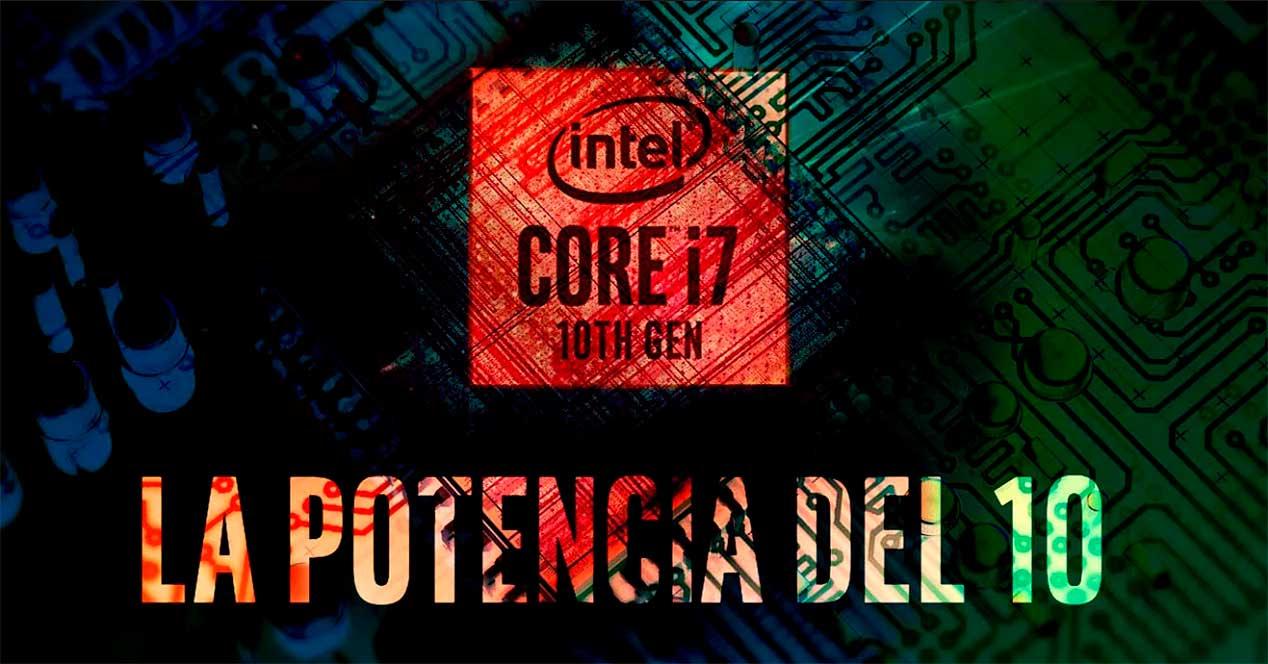It is expected that it will be early next month when Intel makes the launch of its new systems, but to make it easier to wait, such a modern leak will be a great help for us to try to understand what to expect from these CPUs.
The proven processors are these Intel Core i7-10700, Core i5-10600K, Core i5-10500, and Core i5-10400Logically they are all under the new Comet Lake-S building and where we will find that three of them come with a TDP of 65 watts and only one gets 125 watts.
Comet Lake-S vs Coffee Lake-S vs Zen 2, who's faster?

These four processors were tested in various locations and tests, from the Cinebench, using the Spy Software, to other tests to compare the IPC, as well as its use and temperature.
So, we're facing a review rather than a preview of these first four CPUs, ready?
Cinebench R15 and R20

At the Cinebench R20 there are quite a few surprises. Although this version has been known to improve Zen 2's design patents, it's quite surprising to see how the 710700 fails to surpass 9-9900K despite 100 MHz faster across all its cores.
At the same time, the Ryzen 7 3700X which should be more than two is less. His younger brother, the Ryzen 5 3600X is a good distance away, but none of the i5's can get close to its points, with special reference to the i5-10400, over 10500, or one basic mark, something quite surprising when the difference between them is 200 MHz .

On the Cinebench R15, surprisingly, what is seen on the R20 remains the case for the Ryzen 7 3700X, which should be at the top of the table as it is now. Some 10th generation spies are disappointing as well, when they don't exceed the 9-9900K and i7-8700K even with MHz more.
CPU-Z

The CPU-Z has long proven itself to be a standard test for virtual reality, with its high reliability, but what it shows with these new processes is the same standard as the two Cinebench. Although it is now the i7-10700 taking the top spot at its highest speed in all the cores and under the same core, the i5 can no longer travel in any of the defined areas, the rear and the i7-8700K are once again very solid.

At 4 GHz the tables turned again, where 9-9900K regained orders and two of the i5 were able to outrun their rival. Something really strange that seems to indicate that there are performance problems in the system, because the performance is not very consistent.
3DMark

The Fire Strike in the CPU talk also gives us two more lime and sand. The i7-10700 fails to enforce its high speed, but three of the i5s win the i7-8700K. The disappointment of the i5-10500 also.

Spy Time is even more strange. The i9-9900K notes a big difference to the rest, the e5-10400 and the i5-10600K do not outperform their competitors in the slightest and the 5-10500 sinks relentlessly into the problem tree.
4-core, 4-wire, and 4 GHz bandwidth
Restricting performance to 4 kilometers without HT or SMT and 4 GHz to all opponents we can see first of all the configurations taking into account the properties and their IPC. Under these conditions, it's clear that AMD has a small advantage with Zen 2, but as we've seen in its associated updates, it's not as good as AMD itself wanted to see it.
As for the Comet Lake-S, the upgrade is a basic residue, it's not the first step from Intel and it looks like everything will be reduced by the increased frequencies in each model and in the best case the number of cores in the i9, something we already fear.
Uses and temperatures


Even calculating the ancient 14nm process used, Intel surprises here. Obviously, none of the investigators have seen us installing STIM welding as usual, so they all have a pretty hot correlation between their IHS and their deaths, good times for professional hackers without a doubt.
In any case, with the same number of cores and threads as its Cofi Lake counterparts, this new Comet Lake-S facility achieves lower storage utilization and better temperatures. Again the 5-10500 presents problems in this category, since it reaches a minimum of 50 degrees and is used at 62 watts, better figures than your slower brother, somehow less common.
Conclusion

First, there are a few important points that you need to understand in order to understand the data and its cause. The first of these is that the four-generation CPUs are tested on a DELL OEM B460 board in a 4 + 1-phase VRM design, where this model only supports 2666 MHz RAM.

Obviously, these are not the same conditions as all other Intel or AMD processes. Second, the 5-10500 and the i5-10600K are ES, so they can be limited by Intel itself, maybe more often, maybe to TDP, but what is certain is that its effects are not good, especially for the first one.
So, and to finish, the set up may not be running at full power from the four CPUs shown (the update shows points directly in the BIOS), where performance is less consistent and most data seem to have no head or foot if you look at each CPU's configuration carefully.


In any case, this first encounter has been fun, but it seems, or at least gives the impression, that Comet Lake-S has the potential to do more than it looks and is actually a threat to AMD and Zen 2 We'll have to wait to have them in our hands to be able to confirm this, but for now , the leak will add a lot of light to their start.
Table of Contents










